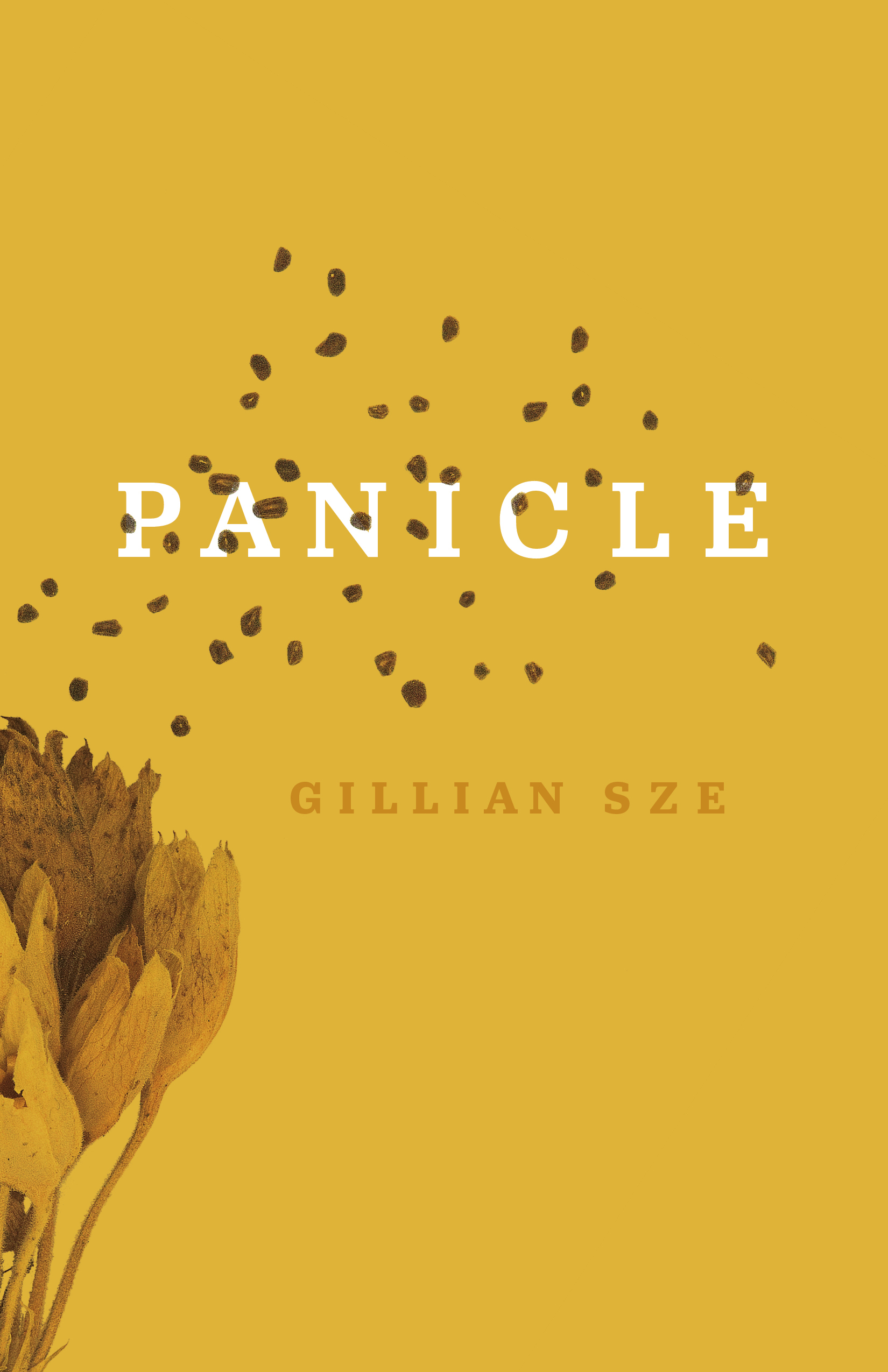Your cart is currently empty!
A note to US-based customers: All Lit Up is pausing print orders to the USA until further notice. Read more
Panicle
“Succulent in its excellence, Sze’s poetry insists that cultural ‘difference’ is what can make a beautiful difference in our apprehension of the ‘beautiful.’” — George Elliott Clarke on Peeling Rambutan
In Panicle, Gillian Sze makes her readers look and, more importantly, look again. It’s a collection that challenges our notion of seeing as a passive or automatic activity by asking us to question the process of looking. The book’s first section, “Underway,” deals with the moving image and includes both poetic responses to film theory and lyrical long poems while also reimagining fairy tales. The next section, “Stagings,” takes its inspiration from the still image and explores a wide range of periods, movements, and media. Sze’s focus on the process of looking anticipates “Guillemets,” a creative translation of Roland Giguère’s 1966 chapbook, Pouvoir du Noir, which contains a series of poems accompanied by his own paintings. Sze’s approach to Giguère is two-fold: she “translates” his text, and artist Jessica Hiemstra provides a visual response to her translation. The final section, “Panicle,” continues the meditative quality of “Guillemets” in a suite of poems that ruminate on nature, desire, and history.
“Sze’s focus sweeps across the natural world, intimate relationships, and the literary, visual, and performing arts — and does so with the gentle and confident touch of a calligraphist . . . Sze has produced an exceptional collection — unique in viewpoint, impeccably researched, admirably restrained, and brimming with heart.” — Quill & Quire
“Sze’s writing is enigmatic, but never opaque; it’s readable and original; it sings in its truth-telling. She writes after poets like William Carlos Williams, reveling in language and beauty, arresting the reader with a burnished perspective.” — Scene Magazine
“The opening poem in Panicle, Gillian Sze’s most recent book of poetry, is a masterful distillation of the emotional work of poetry . . . Regardless of the subject, Sze has a tremendous capacity to distill a moment or an observation down to its essence and have us look again, see anew . . . Panicle is a compelling and rewarding book. Not only are the poems beautiful and insightful, they vary in style and subject matter and travel us through a world of love and loss, of art and beauty, of nature, history and desire.” — Prairie Fire
“The book reflects this idea of sprawling, multifaceted growth in rich, innovative poems.” — Room Magazine
“Sze’s willingness to experiment with different forms of poetry also makes Panicle so intriguing. From prose poems to sonnets, Sze showcases her immense talent . . . Sze has published yet another outstanding collection, offering us several budding points of conversation, and we have no choice but to follow the natural bifurcations of them, as we are led, dazzlingly, to their many blossoming conclusions.” — Ricepaper Magazine
You must be logged in to submit a review.


